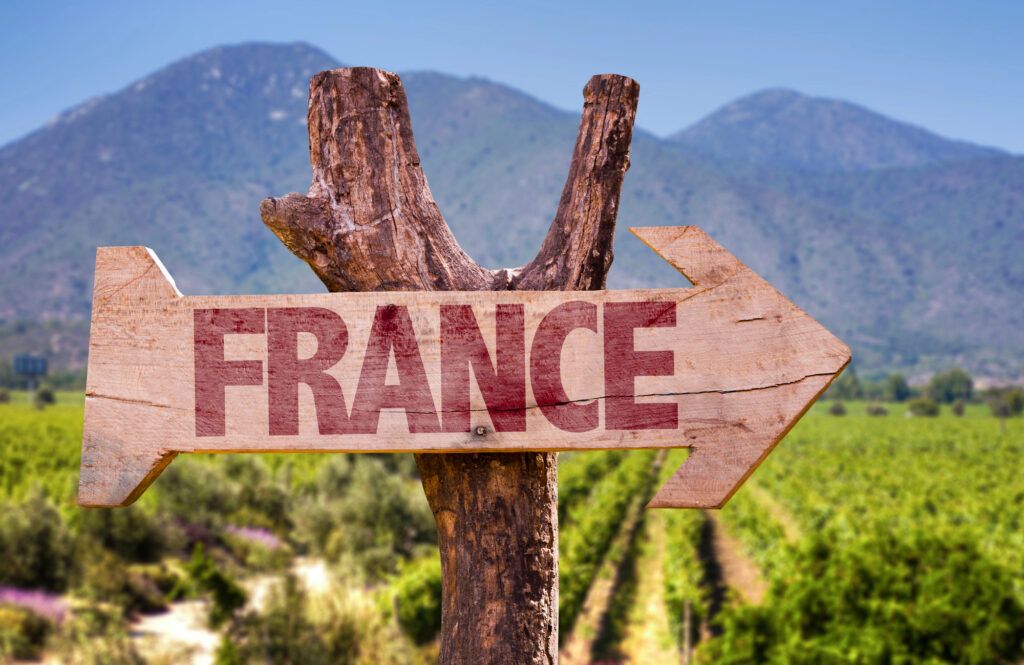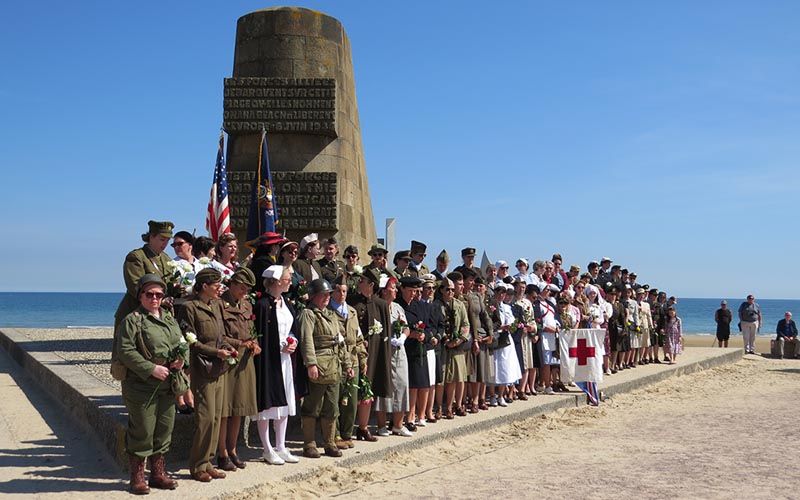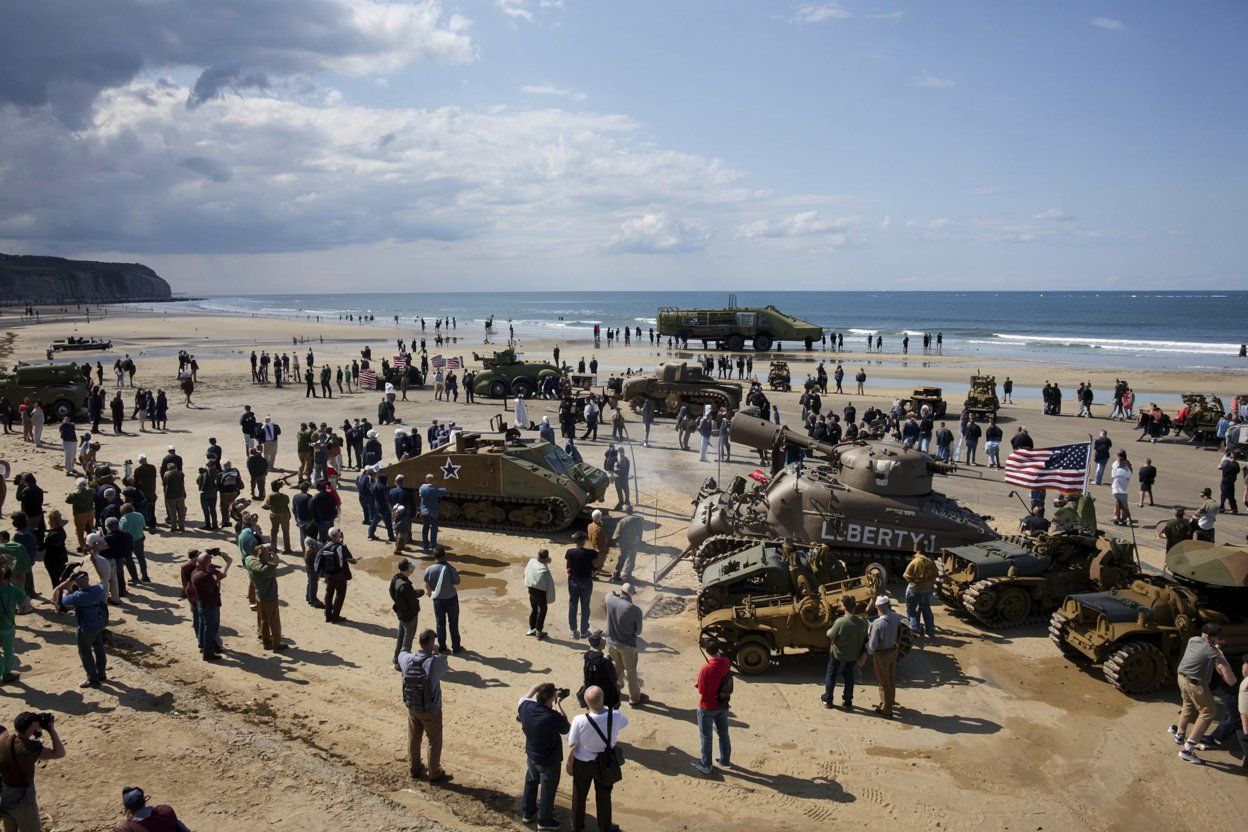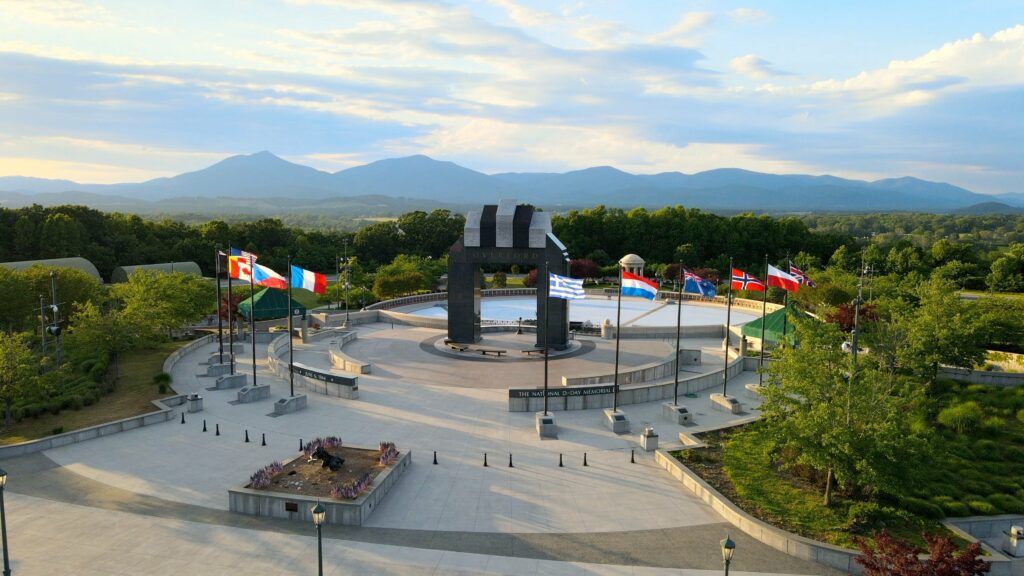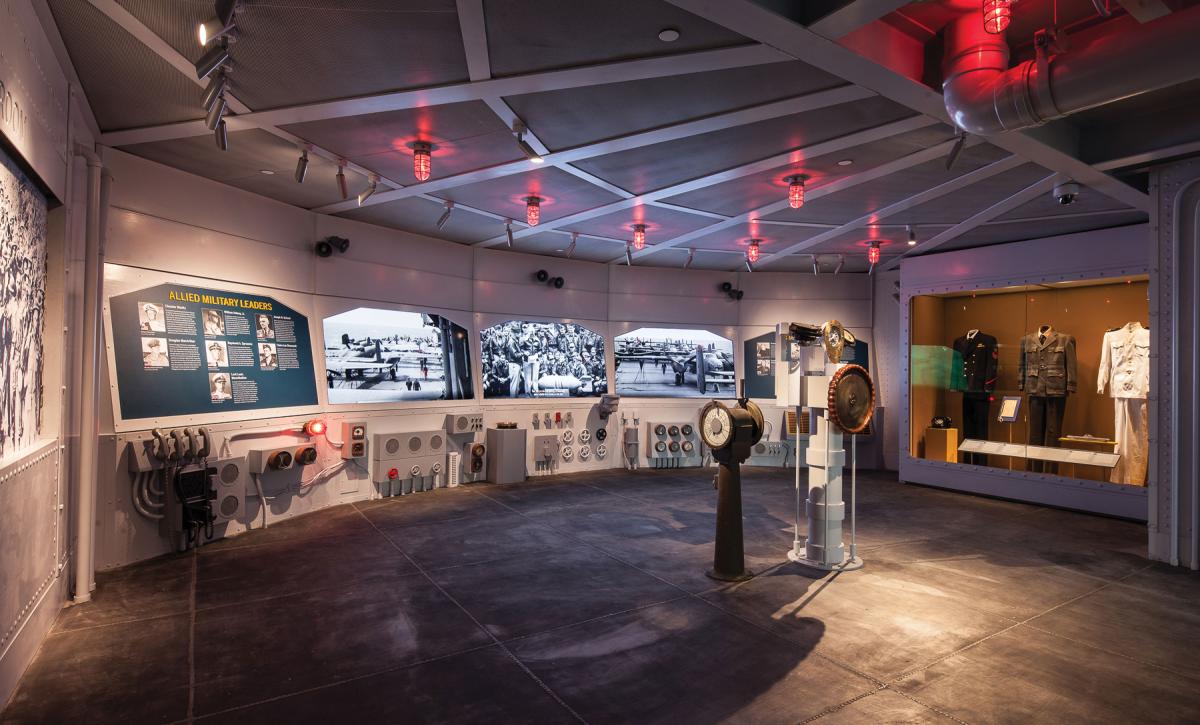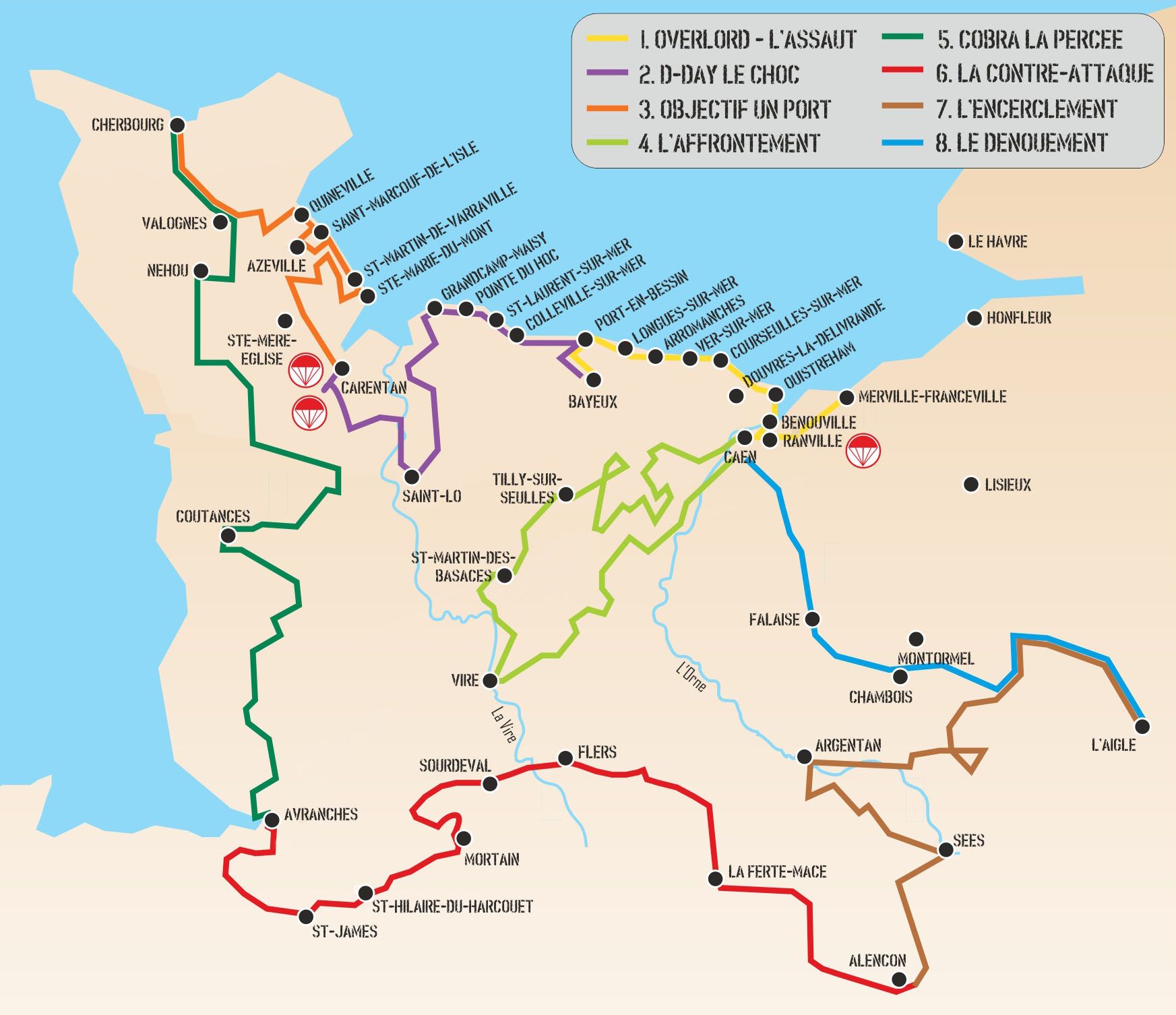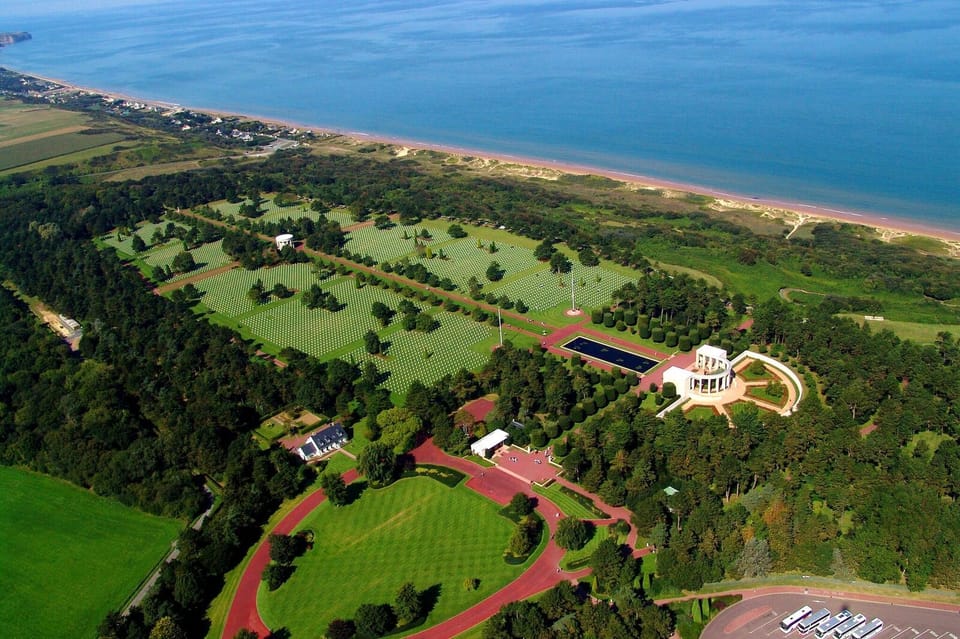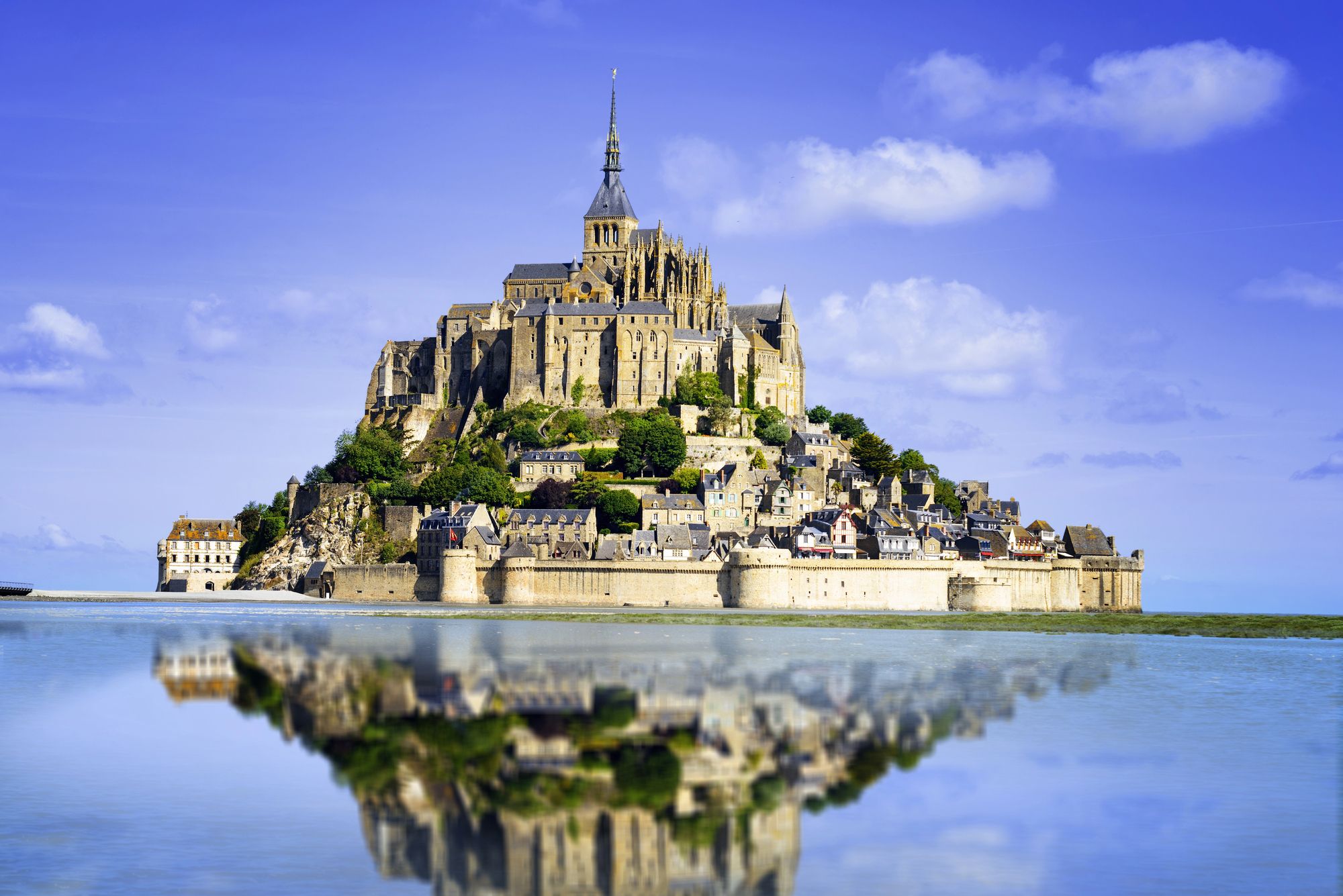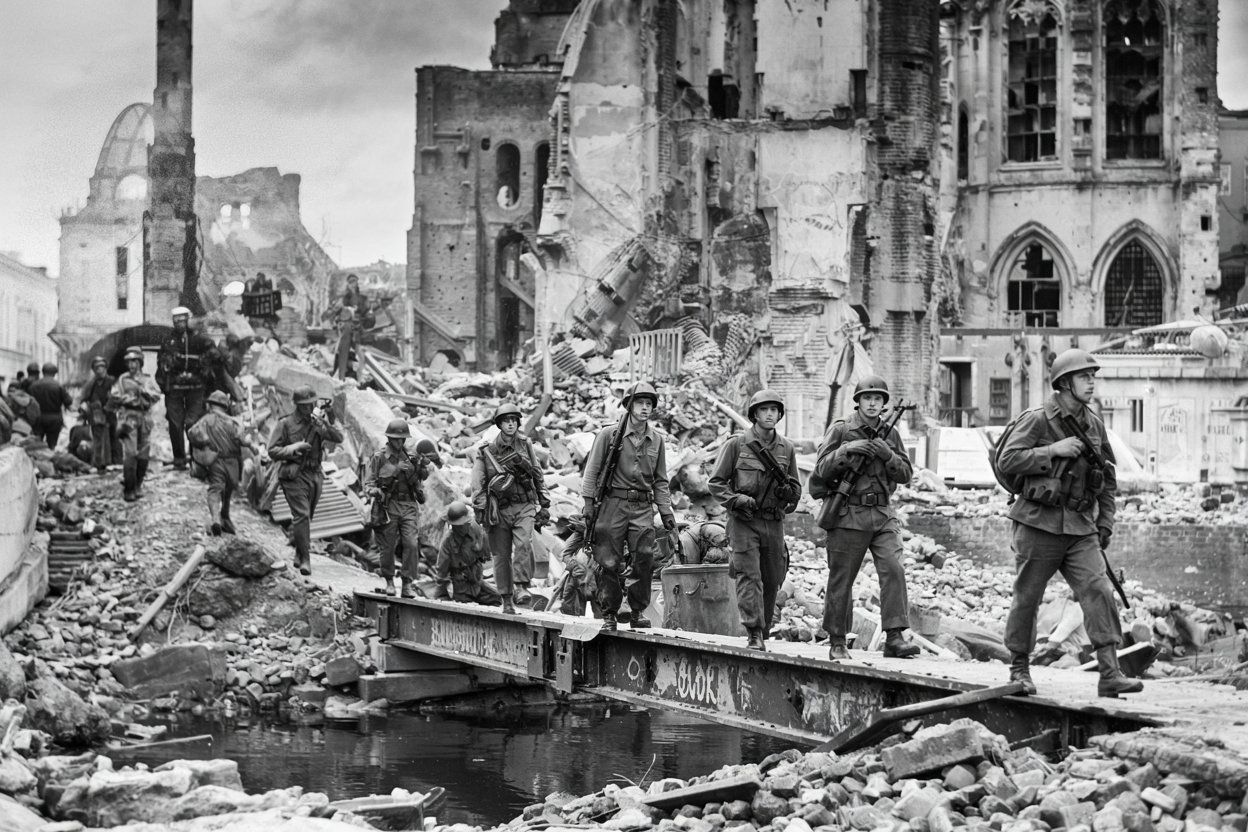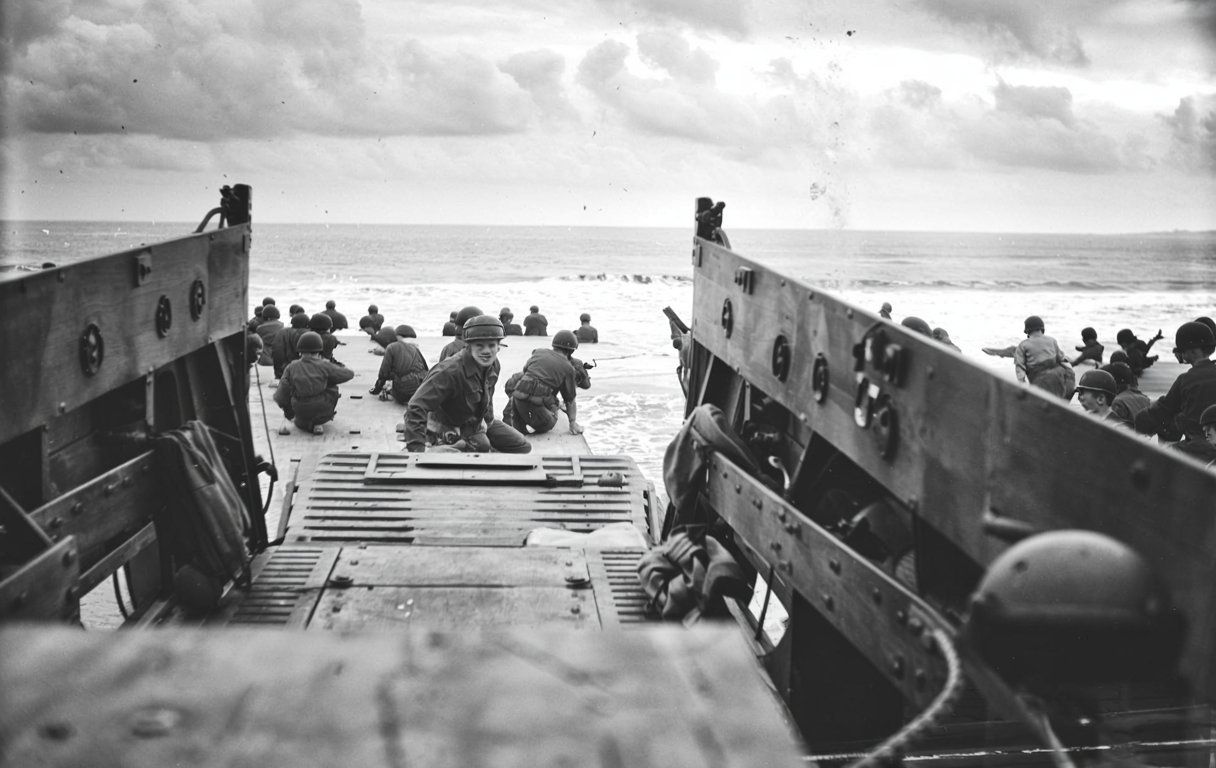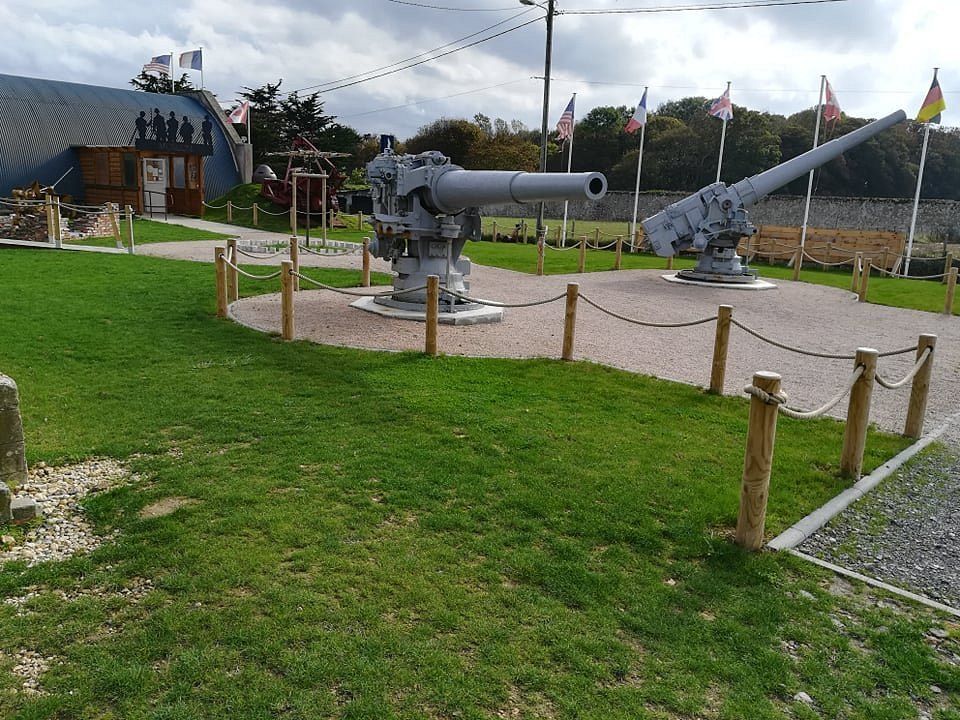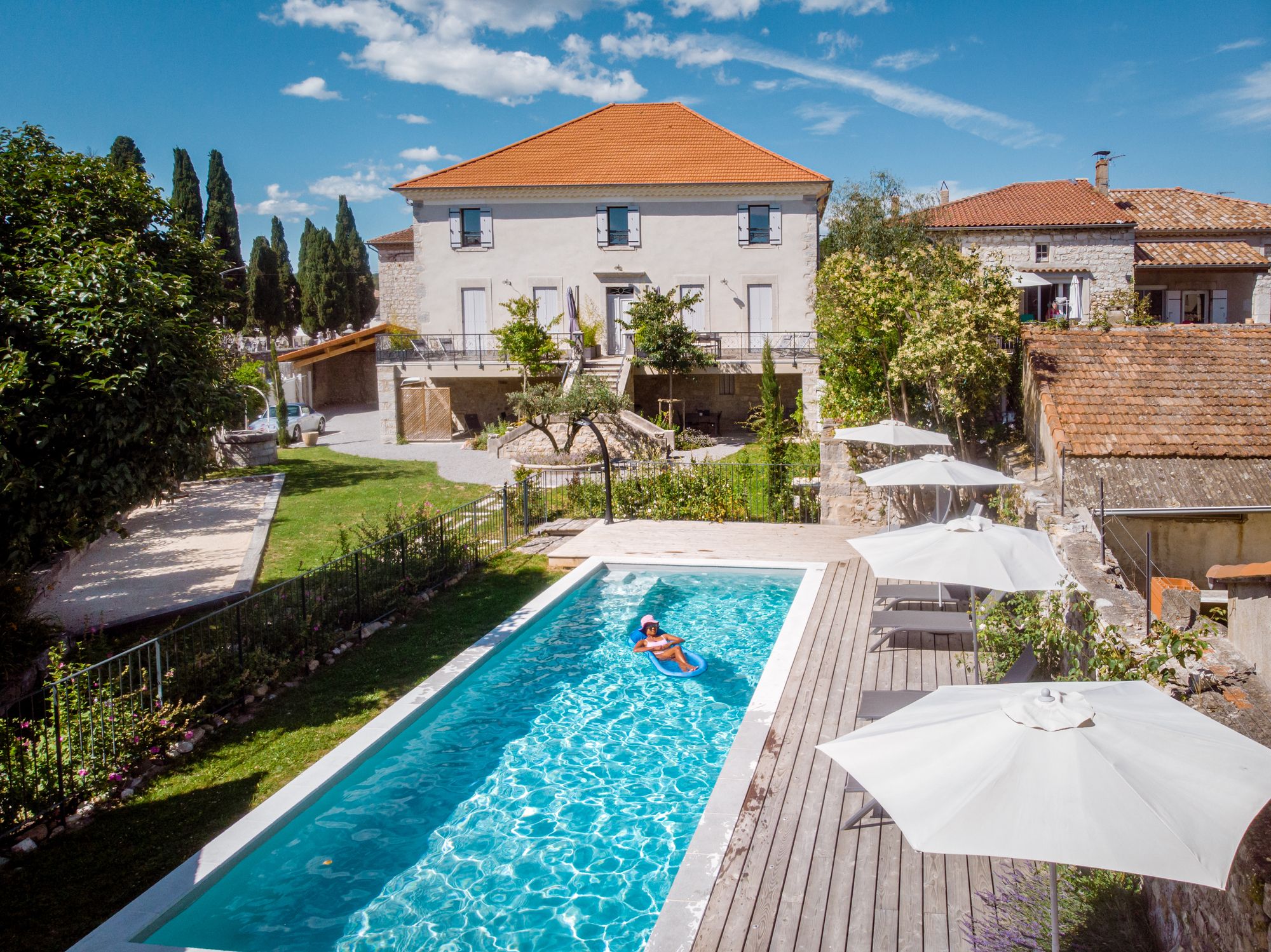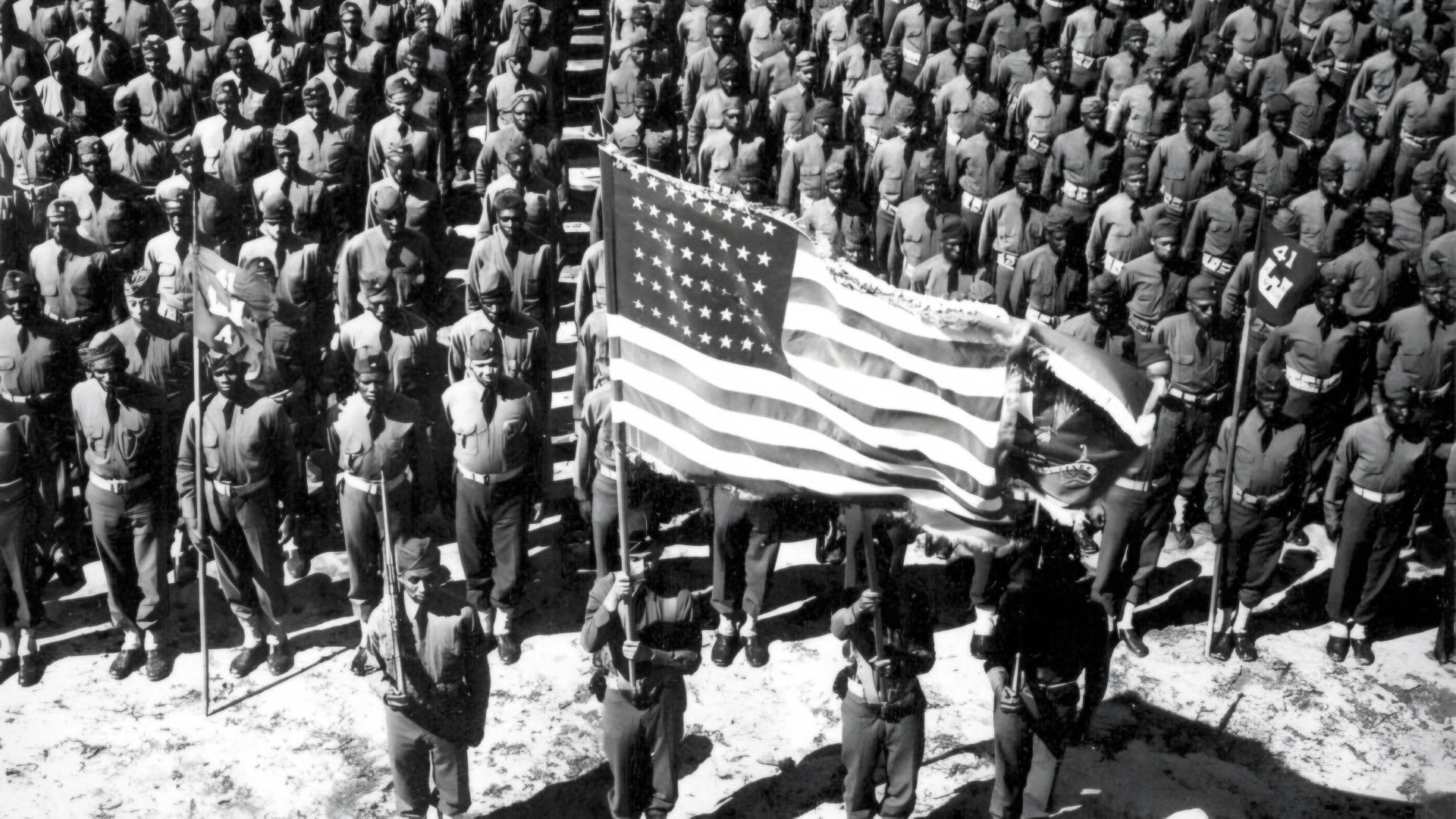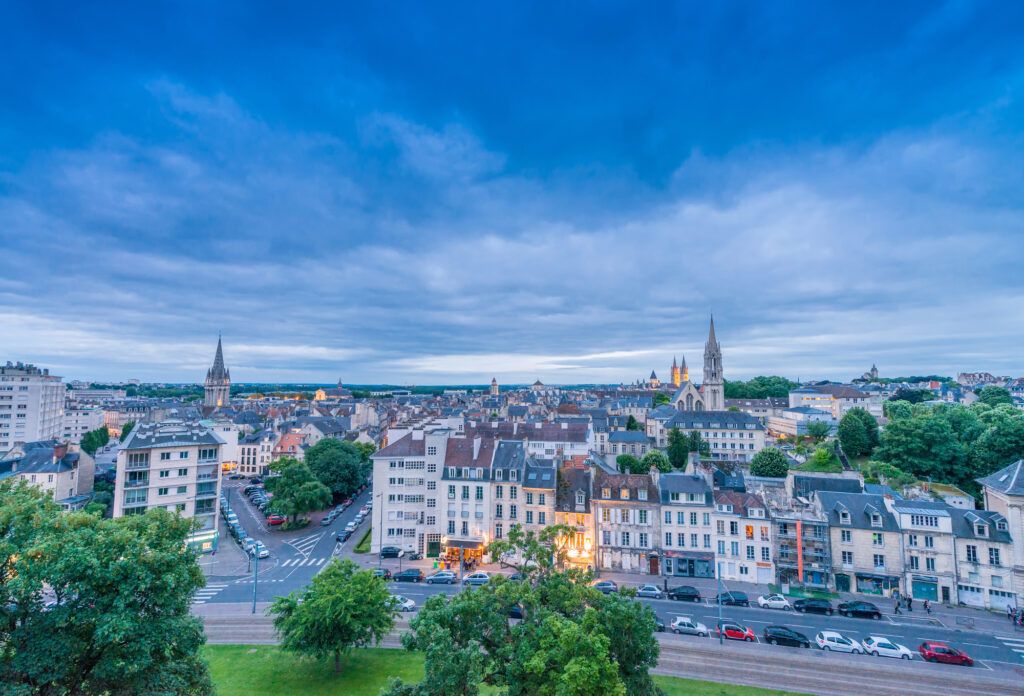Normandy’s got this unique blend of history, culture, and natural beauty—especially in July, when everything seems to come alive. Sure, there are the famous D-Day sites, but if you wander a bit, you’ll find quieter corners where local life hums along. Whether you’re chasing history, food, or just want to be outdoors, Normandy’s got something for just about anyone this week.
With summer’s longer days and warm weather, it’s easy to squeeze in both museums and beach walks. There’s time to see a lot, and still linger over a lazy lunch or a glass of cider. Here are some ideas to help you tap into both the region’s big moments and its everyday magic.
1) Visit the D-Day landing beaches and museums
The D-Day sites in Normandy still hit hard, even all these years later. The five landing beaches each tell a different piece of the story.
Utah Beach Museum sits inside a German bunker—kind of surreal, honestly. There’s a solid collection of vehicles and personal stories. If you go on a weekday morning, you’ll dodge most of the crowds.
Omaha Beach feels peaceful now, but it’s impossible not to think about what happened there in 1944. The American Cemetery at Colleville-sur-Mer is open daily, 9am-5pm.
If you’re interested in the British side of things, Pegasus Bridge and Museum really brings the airborne landings to life. They’ve got English-speaking guides at 10am and 2pm this week.
The Memorial de Caen covers the whole Battle of Normandy, and there’s a summer exhibit on civilian life running through July 19.
Honestly, renting a car makes things easier. The coastal drives are beautiful, but buses don’t always get you where you want to go.
2) Explore the cliffs and coastal views at Étretat
Étretat’s cliffs are something else—white chalk arches shaped by the sea, dramatic and a little wild. July’s weather is usually spot-on for hiking.
You’ve got three main cliff-top paths, each offering a fresh angle on the coast. Most folks head to Porte d’Aval and L’Aiguille (the Needle), which sticks up out of the water like something out of a painting.
Photographers—if you’re picky about light, early mornings are best, and you won’t have to elbow your way through crowds. The Chapelle Notre-Dame de la Garde up top gives you sweeping views of the bay.
Wear good shoes; the trails get a bit rocky. If you take your time, the whole circuit is a nice two-hour wander.
The town’s worth a stroll too. There’s a seaside promenade and seafood spots where you can try whatever was pulled from the water that morning.
3) Tour Mont Saint-Michel and its medieval abbey
Mont Saint-Michel’s one of those places you just have to see. The abbey towers over the bay, and when the tide’s in, it looks like a floating castle.
The main street winds uphill, past shops and houses that have been around for centuries. It gets busy, but it’s worth it.
If you want the full story, join a small-group guided tour that includes abbey entry. You’ll get the history without feeling lost in the crowd.
Inside, the mix of Romanesque and Gothic architecture is pretty stunning. Don’t skip the cloister and the refectory—they’re my favorites.
Walk the fortification walls for a panoramic look at the bay and those wild tides.
Before you leave, try the salt-meadow lamb. It’s a local specialty, and honestly, it’s unlike anything else.
4) Attend local flea markets and food fairs
If you want a taste of real Normandy life, check out the flea markets and food fairs this week. The Saint-Lô Antiques Fair runs July 13-14, with over 80 vendors selling everything from old war relics to classic Norman furniture. Find it in the main square, 8 AM to 6 PM.
Bayeux’s brocante market is on Wednesday, July 16, around the cathedral. It’s smaller, but you’ll spot vintage linens and ceramics you won’t see anywhere else. Go before 10 AM for first pick.
The Caen Food Festival is at Place Saint-Sauveur all weekend. Local producers bring their best cheeses, ciders, and seafood, and there are live cooking demos too.
If you like a treasure hunt, the coastal flea markets near Deauville pop up along the boardwalk, especially Friday mornings.
Bring cash—most sellers don’t take cards. Haggling is fair game at the antique markets, not so much at the food stalls. Early birds get the best deals and avoid the midday heat.
5) Walk the historic streets of Honfleur harbor
Honfleur’s harbor feels like a step back in time. The cobbled lanes and half-timbered houses could be straight out of a painting.
Start at the Old Basin (Vieux Bassin). The buildings lining the water used to be merchant homes, now they’re cafes and restaurants—perfect for a coffee stop.
The Lieutenancy building at the harbor entrance, freshly restored, now houses an Interpretation Center on Architecture and Maritime Heritage. Worth a look if you’re curious about the town’s maritime past.
Honestly, the best way to see Honfleur is just to wander. Roaming the old town leads you into hidden courtyards and tiny workshops where artisans still practice old crafts.
Go with comfy shoes—the cobbles can be rough. Mornings are quiet, evenings are golden for photos.
6) Sample Calvados and Normandy cider tastings
July’s when Normandy’s apple orchards are at their best, so it’s prime time for cider and Calvados tastings. Plenty of farms and distilleries open their doors this week.
The Normandy Cider Route is a scenic 40-kilometer drive through rolling countryside and old farmhouses. Several producers along the way welcome visitors for tastings and tours.
Stop by Calvados Pierre Huet distillery, a standout in the region. You can try Calvados, Pommeau, perry, and classic ciders in their historic setting.
Most places walk you through how Calvados is made—different from cider, and it gets better with age. Some offer barrel tastings, which is a treat if you like the deeper, richer stuff.
Cambremer is a great base for your cider adventure. The village is known for both top-notch apple brandy and crisp ciders.
7) Discover WWII memorials and bunkers
WWII sites in Normandy are marking the 81st D-Day anniversary this week, so there’s a lot going on. You can join guided tours of the landing sites daily, 9am-5pm.
The Caen Memorial Museum is open late until 8pm this week. Their 2025 exhibit focuses on new finds and stories from resistance fighters.
Along the coast, dozens of bunkers and fortifications are open, with historians on hand at certain spots to explain the Atlantic Wall defenses.
American and German cemeteries hold sunset remembrance ceremonies—readings from soldiers’ letters, music, the works.
If you want something less touristy, check out offbeat WWII sites or the temporary exhibit near Arromanches with personal items from locals who lived through the liberation.
Don’t skip the light projection at Pointe du Hoc on Friday and Saturday nights—the cliffs are lit up where the Rangers climbed in ‘44. It’s pretty powerful.
8) Join spring festivals celebrating Norman traditions
Even though it’s July, Normandy keeps the festive spirit going with cultural celebrations all summer. Several festivals are happening this week if you want a taste of local tradition.
The Festival of Norman Gastronomy in Rouen is a great intro to regional food. Producers show off family recipes and fresh local goods.
Coastal towns keep their maritime festivals rolling through the season—think boat parades, seafood tastings, and old-school fishing demos.
In smaller villages, you’ll stumble on local festivals with craftspeople showing off traditional skills—some of these methods haven’t changed in centuries.
Wear comfy shoes and plan for late afternoons into the evening; these festivals are a perfect way to wind down after a day out.
9) Experience the Normandy Impressionist trail inspired by Monet
Normandy is the birthplace of Impressionism, so if you love art, you’re in for a treat. This week, with July’s sun finally showing up, you can wander the landscapes that once sparked Monet’s creativity (and a bunch of other painters, too).
There’s a self-guided route that takes you through 13 of Normandy’s prettiest towns. Each stop gives you a fresh look at the movement that basically changed art forever.
Kick things off at Étretat. The wild coastal cliffs here grabbed Monet’s attention, and honestly, when you see those arches, you’ll get why he kept painting them.
In Honfleur, check out the harbor—a magnet for artists thanks to its almost magical light. The way those colorful old buildings bounce off the water? It’s like stepping into a painting.
Giverny is a must. You can stroll through Monet’s own gardens, the very spot that gave the world those dreamy water lilies. The flowers are going wild right now—don’t skip it.
If you want to dig deeper, Normandy’s museums show off original masterpieces and share stories about the places that inspired them.
10) Enjoy fresh seafood and cheese in coastal villages
Normandy’s coastal villages serve up some of the best seafood in France, with fishing boats hauling in the day’s catch right to the docks. You’ll find standout mussels and oysters in spots ranked among France’s loveliest villages.
These little seaside towns keep things real—no tourist traps here, just honest food and plenty of charm. Most restaurants put together seafood platters with whatever came in that morning, always paired with Normandy’s legendary cheeses.
Locals talk about the “4 C’s”: Camembert, Calvados, Cider, and Cream. You’ll spot these on almost every menu.
Take Honfleur again—it’s a fantastic place to eat well while watching boats drift by. This week, a few harborfront places are running special set menus, mixing the freshest seafood with regional cheeses.
For a real slice of local life, swing by the morning markets. Fishermen sell their haul straight off the boat—scallops, sea bass, whatever they’ve netted that day.
Essential Travel Tips for Visiting Normandy in July
July in Normandy means warm days, busy sights, and a bunch of local events, so it’s smart to plan ahead. Packing right, figuring out transport, and knowing a bit about local habits will make your trip a lot smoother.
Weather and Packing Recommendations
Normandy in July usually sits between 55°F (13°C) at night and 75°F (24°C) during the day. It’s summer, but rain likes to surprise you—don’t let it catch you off guard.
What to Pack:
- Light clothes for the daytime
- A jacket or sweater for evenings
- Waterproof jacket or a small umbrella
- Good walking shoes
- Sunscreen, sunglasses, and a hat
- Swimwear if you’re hitting the beach
The July climate is generally friendly, though the coast can get breezy and a bit cooler. Water temps hover around 64°F (18°C)—not tropical, but plenty of folks take a dip.
Layer up, since mornings might start off foggy, especially by the sea, but the mist usually clears before lunch.
Local Transportation Options
Renting a car is probably your best bet for reaching Normandy’s quieter corners and villages. You’ll find the big rental brands at airports and train stations.
Public Transportation:
- Regional trains link up the main cities
- Buses get you to smaller towns
- Bikes for rent in touristy spots
- Taxis in the larger towns
The roads are in good shape, but some country lanes are narrow—take it slow. If you’re heading to the D-Day beaches, consider a guided tour. It’s easier, and you get the stories behind what you’re seeing.
In July, parking at hotspots like Mont Saint-Michel can turn into a headache. Show up early or use the park-and-ride lots. Many beach towns run free shuttles from parking to the center or waterfront.
Cultural Etiquette and Customs
Trying a bit of French goes a long way. A simple “Bonjour” when you walk into a shop or “Merci” when you leave is always appreciated.
Some local habits:
- Greet shopkeepers when you come in and out
- Lunch is usually 12-2pm; lots of places shut down then
- Dinner rarely starts before 7:30pm
- Tipping isn’t expected, but rounding up is nice
July brings festivals and markets all over Normandy. Most towns have weekly markets loaded with fresh food and local specialties. Just a heads up: many places close on Sundays, especially outside the cities.
Normandy’s food scene is heavy on seafood, apples, dairy, and calvados (the local apple brandy). When you eat out, the “menu du jour” usually gives you the best taste of what’s local.
Seasonal Events and Local Traditions
Normandy’s summer is packed with festivals and traditions that show off its history and food culture. July really brings out the best of local celebrations—think lively markets, parades, and a lot of good eating.
Featured July Festivals
The Bayeux Medieval Festival (July 13-14) turns the old town into a time machine: costumes, crafts, music, even jousting. You can try archery or get roped into medieval games if you’re feeling brave.
Food fairs pop up everywhere, but the Cider Festival in Beuvron-en-Auge (July 15-16) is a highlight. Local producers hand out samples, and there’s folk music in the air.
Maritime Heritage Days in Honfleur (July 18-19) celebrate the region’s seafaring past with tall ships, boat parades, and seafood lining the harbor. Expect:
- Sailing demos
- Craft workshops
- Sea shanty singalongs
- Old boats on display
Normandy Summer Cuisine
July is peak food season, with markets overflowing with just-picked produce. The coastal areas go all out with seafood, especially mussels—look out for “moules-frites” nights in the beach towns.
Apple orchards are getting ready for fall, but some early apples are already pressed into cidre pressé, a non-alcoholic juice you’ll find in most cafés. Some orchards offer tours and tastings this week.
If you’re in Caen, the outdoor market (July 16) is worth a stop:
| Local Specialty | Description | Where to Find |
|---|---|---|
| Camembert | Creamy, authentic cheese | Cheese stalls |
| Calvados | Apple brandy tastings | Spirit vendors |
| Teurgoule | Cinnamon rice pudding | Dessert stands |
| Fresh oysters | From nearby Courseulles | Seafood section |
Special Holiday Observances
Bastille Day celebrations spill into the week, with small towns putting on community gatherings, fireworks, and a fair bit of dancing. In Sainte-Mère-Église, folks gather for a remembrance ceremony that blends French independence with heartfelt tributes to Allied forces—it’s a powerful mix, honestly.
The Fête de la Mer (Sea Festival) pops up in coastal towns, but Dieppe’s (July 19) really stands out. Fishermen deck out their boats with flowers and religious icons, and a priest comes down to bless the fleet—hoping for safety and, let’s be real, a good haul.
Local churches and abbeys host summer concerts this week. Mont Saint-Michel, in particular, puts on choral performances at sunset. The music bounces off the old stone walls, and as the light fades over the bay, it feels almost otherworldly.
Religious processions wind along routes that’ve existed for centuries. People show up in regional costumes, each village with its own twist—it’s tradition, but there’s a certain pride in it, too.

